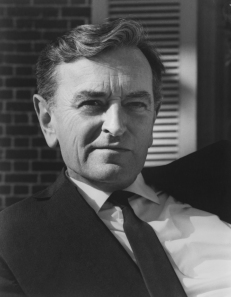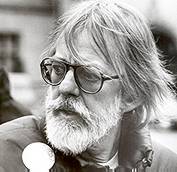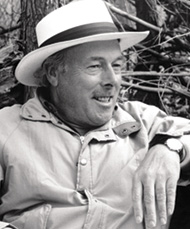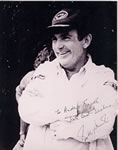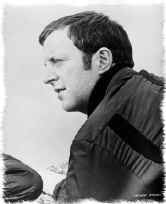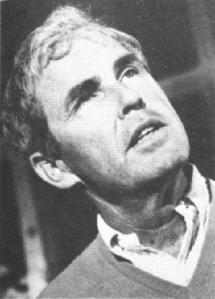I’ve had the opportunity to be a part of a variety of short films and, in doing so, have had the chance to wear many hats from production assistant all the way up to director (even acted in a few, but I will never tell the names of those to protect innocent eyes from my sub par acting abilities). Having been a part of a lot of productions, as with anything, I’ve been able to crew on some amazing films that have won awards and screened at international film festivals and I’ve also been part of some films that I wish “Allan Smithee” could take my credit on. In my nearly 10 years in independent filmmaking, I’ve learned a few things along the way and hope these few tips will help you in your endeavors in making a short film on a little to no budget.

Me on set of a recent short I directed. My very talented DP, Jeff Stepp in blue shirt and the multi-talented Dan A. R. Kelly, a great writer/director who was kind enough to AD/Co-Produce for me on this film in the hat.
1. Short Films DO NOT make money
This is a statement that I can’t stress enough to anyone looking to make a short film. If you think it is going to bring you fame and fortune, you are completely wrong. So, why take the time to make a short? Well, firstly, if you have the drive to tell stories then you need an outlet to do so. Most of us won’t get several million dollars to put our stories out there the first few times we attempt to make films, but like a sickness, we still have the need to express our creative desires and find said desires an audience. Secondly, you are not going to make an amazing film the first time at bat. Making films is a deeply collaborative effort that takes practice like anything else. Each film you make you will learn something from your mistakes and be better for the next project you work on. So, in a world where practice makes perfect, financially speaking, short films are a lot more viable a training ground. Finally, the people who will give you several million dollars to make a feature aren’t going to give it to you on a script alone. They need to see what you are made of from a visual standpoint, and what better way than a fragment of the feature you want to make or a reel of visual work? The more festivals you enter, the more awards you win, the more buzz you acquire will all lead you a step closer to those dreams of one day making a feature (and obtaining fortune, fame, etc.).
2. Multiple Locations = Multiple Headaches
Whenever I get a script for a short film, the first thing I look at outside of whether I actually like the story is what it’s going to take to produce/make the film in relation to shooting, special effects, production design and many other factors. The more locations that need to be dressed, moved to and lit, the more money you are going to have to spend to make that happen. If you are wanting to make a short, do everything you can to take the amount of locations to produce the film down to as low as possible. What’s a magic number for a short film’s number of locations? In my mind: one. If you can stick to one location then you are going to have the extra time and funds available to focus on performance, shot composition and story structure rather than worrying how you are going to get 10 people working for $75 a day (or less) and a meal for 16 hours a day to commit to a few more days because you cant do enough company moves in time.
What if there is no way to tell my story without multiple locations? I can see this point, some stories need more than others. My advice would be to consider whether this is a good story to try to tackle at the time and on the budget you are limited to or do your best to consolidate as much as possible.
3. Films are a Visual Medium, Who Needs Sound?
What’s the number one thing that usually sucks in a short film? The sound and sound design. Why? Because most people are too concerned with the visuals and figure sound won’t be too big a deal to “fix in post.” Well, you’re wrong. Yes, we work in a visual medium and as a cinematographer at heart, I feel this more than about anyone you’ll find (hell, I think we should still be making silents!). However, no one is making silent movies anymore and, if they are, it’s probably not a very serious one; it’s probably an homage to a certain look with sepia tone and 16fps projection.
No matter how good your film looks, if listening to it sounds like the whole thing was recorded in a turbine one minute and a wood box the next, then people won’t be able to properly enjoy it and give your story the chance it deserves. ADR (automatic dialogue replacement) is always an option, but I can’t tell you how many times I’ve thought, “well, we’ll just ADR this” and then in post-production greatly regretted the decision. ADR is a difficult process that still needs to be done by an audio specialist and it’s something difficult to mix properly with on set sound unless done under a very controlled environment. Not to mention, it’s a timely process that will probably push your production’s final cut date back dramatically. So, in short, don’t skimp on sound! Hire someone who knows what they are doing, even it is a boom op/mixer all-in-one type.
4. Don’t go with the Cheapest Camera (or DP)
It’s hard to write a great, engaging story. Look at most of the films even on multi-million dollar budgets, only a few of them are truly great stories. If you can have a real hit screenplay every time you sit down to write though – more power to you. However, more often than not, our stories aren’t as great as we usually think they are in the end. What’s this got to do with cameras? Well, if nothing else, you can at least make that short film look damn good. How do you go about doing this? Don’t go with the cheapest camera or DP available (the DP part is more important).
For those of you new to film, what’s a DP? The DP is an abbreviation for Director of Photography. This is the guy (or gal) who will help the director define the visual look of the film. On set, the DP is in charge of both the camera and lighting crews and choses the lighting schema, camera lenses, filters, instruments and makes a plethora of other decisions that will get what the director wants to see on screen to the audience. Being on a low budget makes it easy to go with the cheapest person for the job. But, this is who will define the look of your film. If they aren’t qualified or don’t have a good visual sense, then your film will not come out looking good at all and, this element of making short films, I think can be one of the easiest to achieve.
Furthermore, once you have the right DP in place, give him the proper instruments he needs to complete the job. I know on a low budget you can’t always shoot 35mm with a full lighting and grip package, but on the other hand, don’t give him a K-Mart camera and a few incadescents from Lowe’s Home Improvement either though. Talk with your DP and figure out what he feels he needs to complete the shoot and achieve the look you want. If it’s too much, tell him, compromise – it’s what low budget filmmaking is all about.
5. As a Director, Always be in a Good Mood
If you are directing a short film, then you likely are the writer and producer as well (and editor, special effects, composer, cinematographer, etc. sometimes). Being on a low budget, you probably have a lot of people working for little or nothing to help you tell the story that you want to tell. These people are doing you a favor and the least you can do is treat them with respect and keep the mood light on set. There are going to be long days, difficult decisions and times you wish you could pull your hair out, but you always have to remember that you are the heart of the set. A great director is someone who understands the whole art of filmmaking, every facet, from the photography to the acting to the way its cut together. They are a foreman, a manager, a psychiatrist, a friend, a confidant and a believer. Your attitude alone will affect the whole set and everyone involved. If you are angry and difficult to please, then it will show readily to everyone on set and not help your picture get made. Likewise, if you are friendly and can face the challenges of independent filmmaking with a good heart, then you will likely have collaborators that will stick with you for a long time to come and be happy to help you create your vision for low pay, meals, copy and credits.
There are obviously many other facets of short film production that could be covered, but I feel that these five simple truths are the ones that I found to be the most important. If you are wanting to take the dive into short film making (for the first or hundredth time) then I think that if you can remember these words of advice, your life will probably be a lot easier through the grueling pre-production, production and post-production processes. I wish you luck and feel free to share your experiences or “life lessons” in this crazy business with me too. You’re never too old to learn something new.















